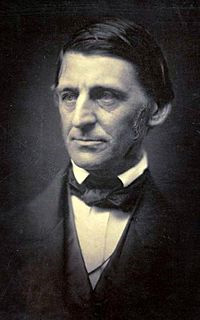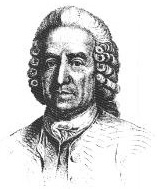
Notable Works
- Essays: First Series (1841)
- Essays: Second Series (1844)
- Poems (1847)
- Nature; Addresses and Lectures (1849)
- Representative Men (1850)
- English Traits (1856)
- The Conduct of Life (1860)
- May Day and Other Poems (1867)
- Society and Solitude (1870)
- Letters and Social Aims (1876)
Ralph Waldo Emerson
Brief Bio
Ralph Waldo Emerson (May 25, 1803 – April 27, 1882) was an American lecturer, essayist, and poet, best remembered for leading the Transcendentalist movement of the mid-19th century. He was seen as a champion of individualism and a prescient critic of the countervailing pressures of society, and he disseminated his thought through dozens of published essays and more than 1,500 public lectures across the United States.
Emerson gradually moved away from the religious and social beliefs of his contemporaries, formulating and expressing the philosophy of Transcendentalism in his 1836 essay, Nature. Following this ground-breaking work, he gave a speech entitled The American Scholar in 1837, which Oliver Wendell Holmes, Sr. considered to be America's "Intellectual Declaration of Independence".[1] Considered one of the great lecturers of the time, Emerson had an enthusiasm and respect for his audience that enraptured crowds.
Emerson wrote most of his important essays as lectures first, then revised them for print. His first two collections of essays – Essays: First Series and Essays: Second Series, published respectively in 1841 and 1844 – represent the core of his thinking, and include such well-known essays as Self-Reliance, The Over-Soul, Circles, The Poet and Experience. Together with Nature, these essays made the decade from the mid-1830s to the mid-1840s Emerson's most fertile period.
(Source: Wikipedia)
Swedenborg Influence
During Emerson's freshman year, a Swedenborgian study group flourished among a few Harvard students who were his acquaintances and who were destined to play a role in providing what was perhaps the first literary impulse to Emerson's career. Chief among these were Sampson Reed and Thomas Worcester.
Reed was most diligent in his college studies, while Worcester's principal activity was in reading Swedenborg's Heavenly Doctrines and in transmitting their content to his fellow Harvard students. A set of Swedenborg's writings had been deposited i nthe college library in 1794 by the Reverend William Hill, and Worcester had contrived by ingenious means to get his hands on the complete collection. He kept these volumes on his mantel with the permission of President Kirkland for the four years he was a student, and his room quickly became the center of many student discussions and conferences.
By 1825, Sampson Reed had opened his own wholesale drug business on Hanover street, taken an assistant, and immediately found time to write. His short article based on his 1821 oratioin for the North American Review was published as the the book Growth of the Mind by August 1826.
Emerson's reading of Reed confirmed the doctrine of self-reliance, the reality of the World Spirit; and the feebleness of the arts and sciences when divorced fro their true source. From it Emerson also confirmed the importance of the genuine man, as opposed to the merely great man, and he saw in it both the harmony of philosophy and religion and a nearly unshakable optimism in the future. And as we shall see in his own book, Nature, foremost was the Swedenborgian idea of correspondences.
Emerson's main theme, of course, was that the highest use of nature is to draw forth the latent energies of the soul and lead men away from self-love. This, you will remember, was Swedenborg's definition of correspondence. However, Emerson rejected the so-called Swedenborgian dictionary of correspondences as too absolute, which required the reader to accept as gospel the exact spiritual meaning Swedenborg himself had placed on each object in nature. Rather, Emerson preferred to adopt the general law to his personal purposes, and as later commentators have shown, he never tired of collecting specific instances of his own.
Despite severed relationships between Reed and Emerson over the interpretations of Swedenborg, Emerson continued to mention Swedenborg favorably in public; in his Phi Beta Kappa address on the American scholar in 1837, in his Harvard Divinity School address in 1838.
Then, in 1842, an entirely new chapter opened in Emerson's relation to Swedenborgian ideas when he met the eccentric philosopher of religion, Henry James, Sr., in New York City. It was on the occasion of a public lecture that Emerson gave in March of that year. The most notable influence of Henry James, Sr., and James Wilkinson on Emerson in the late 1840s can be found in the pages of Emerson's Represenntative Men (1850).
While the members of the Swedenborgian church objected strenuously to Emerson's characterization of Swedenborg as a mystic, Emerson maintained that his use of the term meant Swedenborg stood for all those who look within, because no other such personality type was represented in the remaining men of his book. While he exalted Swedenborg's life, Emerson was also equally critical of it. He was naturally attracted to the self-taught, intensely inner nature of Swedenborg's accomplishments. But, Emerson said, as he had elsewhere, that Swedenborg erred in assigning a fixed ecclesiastical meaning to each object. "The slippery," says Emerson, "is not so easily caught. In nature each individual symbol plays innumerable parts..., Nature is no literalist..., and she avenges herself on hard pedantry that would chain her waves." Swedenborg's "theological bias thus fatally narrowed his interpretation of nature, and the [great] dictionary of symbols is yet to be written. But the interpreter whom mankind still expects will find no precursor who has approached so near the true problem." And finallhy, Emerson said:
My concern is with the universal truth of Swedenborg's sentences, not at all with the circumstances or vocabulary. To seek too much of that were low and gossiping. He may and must speak to his circumstance and the way of events and belief around him, to Christendom or Islamism as his birth befell; he may speak of angels or Jews, or gods or Lutherans or gypsies, or whatever figures come next to hand; I can readily enough translate his rhetoric into mine.
Meanwhile, Swedenborgian churches flourished throughout the region and were supported by the wealth of famous New England families. When Harvard Divinity School declined funds to endow a chair in Swedenborgian studies, the Swedenborg School of Religion was founded in 1889 in Cambridge for the preparation of New Church ministers, with the aging Thomas Worcester being its first president.
Strange as it may seem, though the name of Swedenborg was so well known at the time, barely one hundred years later, in our own day, if any man or woman were asked, it is likely that fewer than one in a thousand would have heard the name. Emerson, at least, fares a little better. Nevertheless, through a process that might be called the naturalization of ideas-in which specific intellectual influences have now become part of the flow of common culture, both Swedenborgian and transcendentalist thought survive as integral, albeit hidden, strands of the fabric that defines present-day folk consciousness in America.
(Source: Emerson: The Swedenborigan and Transcendentalist Connection by Eugene Taylor)

